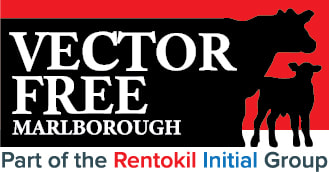Aerial 1080
Biodegradable 1080 applied by air to cover large areas of remote, rugged terrain consisting of steep hills and mountains, unsafe for ground personnel, or when pest plagues overwhelm traps and bait stations. We use helicopters and Differential Global Positioning Systems (DGPS) to ensure that baits are placed accurately for maximum effect. All aerial 1080 operations are subject to strict health, safety and quality assurance controls and are highly regulated before, during and after each operation. Initially the the treatment area is pre-fed with non-toxic cereal baits. Then, after 7-10 days (weather depending), toxic 1080 baits are applied.
Read more about 1080 here:
Read more about 1080 here:
Ground possum control
Traps and bait stations are the main types of ground control used to keep possum numbers low as we work towards eradicating TB from New Zealand over the long term. Their design and toxins target specific pests and they are designed not to attract or harm other species.
Read more here:
Read more here:
Ground possum surveillance
Some of our ground-based field work is designed to determine possum density and / or assess whether TB is present in possums in the specified area, in which case possum carcasses will be recovered and set for post mortem.
Detection surveys use wax tags®, chew cards or bait stations to indicate the presence of an animal. Chew cards or wax tags are temporarily attached to trees or fence posts and left in place for a period of seven to 10 days. These devices indicate that possums have been detected through species-specific bite marks. Measuring the amount of bait taken from a bait station also provides a means of detecting possums. The devices are placed around a small, isolated area where possum numbers are believed to be low. Detection devices are non-toxic and do not pose a risk to humans or animals. All cards and mountings are removed at the end of the survey.
Detection surveys use wax tags®, chew cards or bait stations to indicate the presence of an animal. Chew cards or wax tags are temporarily attached to trees or fence posts and left in place for a period of seven to 10 days. These devices indicate that possums have been detected through species-specific bite marks. Measuring the amount of bait taken from a bait station also provides a means of detecting possums. The devices are placed around a small, isolated area where possum numbers are believed to be low. Detection devices are non-toxic and do not pose a risk to humans or animals. All cards and mountings are removed at the end of the survey.
Pig / Ferret Surveillance
Surveillance of mainly wild pig populations (and sometimes ferrets) for presence of TB, helps TBfree to understand which areas are most at risk of TB infection.
Wild pigs and ferrets scavenge TB infected possums and can become infected with the disease. This makes pigs and ferrets extremely important indicators of whether TB is present in an area. Pigs also have a large home range to scavenge which allows large areas to be sampled effectively. Pig and ferret carcasses are recovered and sent for post mortem to identify if TB is present. Trapping is the only method employed for ferret survey operations. No toxins will be used.
Wild pigs and ferrets scavenge TB infected possums and can become infected with the disease. This makes pigs and ferrets extremely important indicators of whether TB is present in an area. Pigs also have a large home range to scavenge which allows large areas to be sampled effectively. Pig and ferret carcasses are recovered and sent for post mortem to identify if TB is present. Trapping is the only method employed for ferret survey operations. No toxins will be used.
Wilding Pines
We use a range of pest plant control methods including hand pulling, cutting and stump treating, foliar spraying, as well as drilling and injecting herbicide. Using off road vehicles, helicopters and GPS we deliver comprehensive and effective control in some of New Zealand's most challenging terrain. Our field operatives use a range of digital platforms for data collection, reporting and communication, supported by experienced in-house geospatial analysis and map production.
